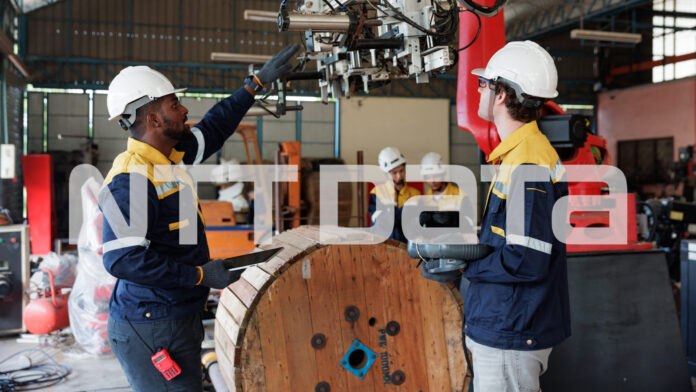NTT Data, the global system integrator division of Japanese group NTT, has introduced a new edge AI platform that “integrates and synthesises” data from sensors, devices, and systems in enterprise venues to flow into task-specific industrial AI models. It is being offered as a managed service with its broader enterprise edge portfolio, which comprises edge-based sensing (IoT), computing, connectivity (private 5G), and devices. It is pitched at the Industry 4.0 market, as a top-level AI platform to combine and utilise IT/OT data on fast and reliable new edge infrastructure.
The London-based firm suggested industrial edge set-ups are not the place for trendy generative AI applications. “While the spotlight has been on gen AI and large language models, these technologies are impractical for industries requiring real-time and local decision-making,” it said in a statement. Its point appears to be that domain-specific industrial machine learning (ML) applications, by contrast, can be geared to deliver ‘mission-critical’ insights and decisions using new on-prem private-edge 5G and private-edge computing architectures, as also offered by NTT Data.
The continuing rollout of various sorts of IoT sensing devices in factories and plants, meanwhile, brings new industrial telematics measures, and a way to also connect legacy OT machines, so ML-based AI applications can be put to work with more data for more applications. NTT Data said: “By processing data when and where it is generated and unifying diverse IoT devices, systems, and data, this… solution enables real-time decisions, enhanced operational efficiencies, and secure AI application deployment across industries to drive advanced Industry 4.0 technologies.”
But ring-fenced edge systems do not draw the same (remote) compute power as cloud-based compute engines, and are employed, in part, so data transport and decision-making does not have to go both ways between far-off data centres; instead, local data processing at the edge has to be efficient and optimised – to run “on compact computing platforms, using smaller, more efficient ML models to deliver real-time AI insights”, said NTT Data. Its new platform handles data discovery, collection, integration, computation, connectivity, and AI model management, it said
It explained: “[The platform] addresses the shadow IoT challenge and AI infrastructure requirements… by auto-discovering, unifying, and processing data from IoT devices and IT assets across [an] organisation, [and] simplifying AI deployment and management… [It] leverages lighter, cost-effective AI models… to run within a small compute box. [It] will perform specific tasks, such as supporting safety or operational efficiency, by collecting data from disparate devices across a network environment [to enable fast] and secure data processing and analytics.”
It said the software “auto-discovers [enterprise] assets with [a] vast library of pre-built OT interfaces”, and then generates a diagnostic report and control portal to review and manage assets and data, including about security risks; domain-specific AI/ML models can then be plugged-in. NTT Data suggested a couple of AI use-case scenarios, for predictive machine maintenance and energy usage optimization. The platform is offered with its managed edge bundle, which makes IoT-related technologies available to enterprises as-a-service with a management support team.
It is also offering enterprises a free 30-day “discovery and diagnostic” appraisal of their IT and OT environments. NTT Data said its consultancy business has “a thousand industry experts, hundreds of use cases… and over 500 sales experts”. It quoted analyst house IDC that worldwide spending on edge computing will reach $232 billion in 2024, up 15 percent over 2023 – “perpetuated by the growing number of connected IoT devices worldwide, expected to exceed 41 billion by 2025,” it said.
Shahid Ahmed, group executive vice president of edge services at NTT Data, said: “Our Edge AI platform represents a significant leap forward in driving AI at the edge securely and cost-effectively. By harmonising data from disparate sensors and devices with lightweight AI models, powering all kinds of automation use-cases, [it] is pioneering industrial AI adoption as the first fully managed offering, helping organisations modernise with tailored, industry-specific solutions.”
Alejandro Cadenas, associate vice president for telco mobility and IoT research at IDC Europe, said: “A key challenge for enterprises is reliably capturing and aggregating operational data securely across a fragmented landscape of devices, platforms and data sources and turning it into actionable insights. NTT Data’s ultralight Edge AI addresses these issues and simplifies the deployment and adoption of a data-driven enterprise strategy, reducing risks and timelines and optimising total cost of ownership and value for the enterprise.”
Pablo Tomasi, principal analyst for private networks at Omdia, said: “AI must happen where [it creates] most value for the enterprise; for many, this is where the data is generated. By ingesting IT/OT data and leveraging AI to drive use-case specific results, the NTT Data solution takes another step towards realising the industry 4.0 vision. Additionally, using task-specific small AI models will help drive AI democratisation by making it easier for enterprises to introduce AI where and when it is needed, without the need for an extensive overhaul of their whole infrastructure.”

